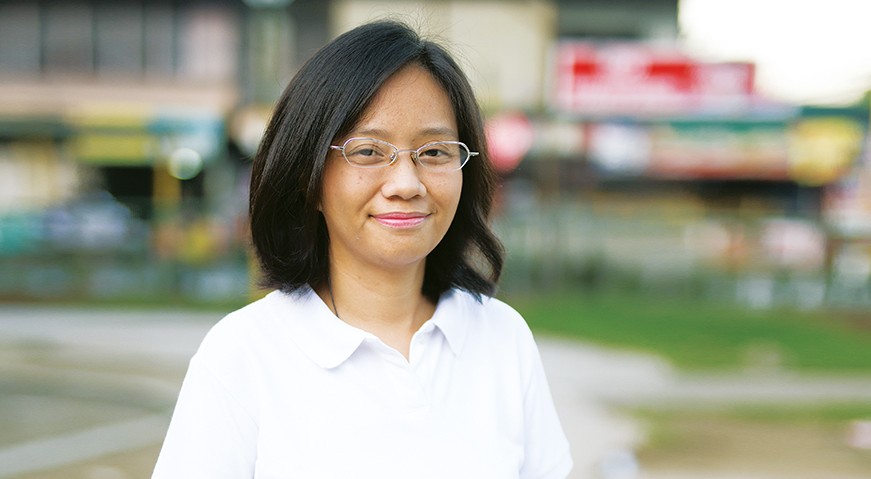The Sound That Was Lost and Found
The Sound That Was Lost and Found
April Encontro-Garrovillas
The noise of everyday life could be deafening. To April Encontro-Garrovillas, it happened, literally, at age 19. She lost her sense of hearing from labyrinthitis, an infection of the cochlea, the spiral cavity of the inner ear.
The cochlea triggers nerve impulses from sound vibrations.
April’s cochleas in both ears partially lost their function while she was on a bus to Quezon province. The person next to her complained about the loud sound from her Walkman. “That was when I realized I had a problem,” she said.
In less than six months, her hearing was completely gone.
Search for Answers
April does not recall having symptoms of labyrinthitis. Her hearing just swiftly deteriorated. Initial checkups did not yield any clear answers so she and her mother traveled to Manila and hopped from one clinic to another, but nobody could tell them what had happened.
Meanwhile, her medical bills piled up and her father’s health was failing.
A computer science student and dean’s lister, April was graduating from college then. Thus, her mother would not give up, and the search for the right doctor and facility continued.
Eventually, serendipity led them to the office of Dr. Norberto Martinez, who, in 1997, performed the Philippines’ first cochlear implant surgery at St. Luke’s Medical Center in Quezon City.
Trained in various centers around the world, Dr. Martinez did it with world-renowned ENT (Ear-Nose-Throat) specialist Dr. Wolfgang Arnold from Munich, Germany.
Suddenly, April, who had tried using hearing aids, was at the right place at the right time. Dr. Martinez and St. Luke’s Medical Center Foundation’s Social Services Program and MED-EL, a company producing hearing implants, were looking for the perfect candidate for the next surgery. This time, it must be one who had full hearing capacity but lost it.
“April had post-lingual deafness, meaning she had speech. And then, she got ill and lost her hearing and speech,” Dr. Martinez said.
After background checks and paperworks, April was deemed fit for the cochlear implant, which used to be done outside the country.
Thus, having the surgery done in the Philippines means big savings to patients.
“St. Luke’s was kind enough to give some support to the [first] patient in terms of a substantial discount because the implant alone at that time of the first surgery in 1997 was close to a million pesos already. That was for the gadget alone. Of course, you have to consider the surgery,”
Dr. Martinez said.
The latest-generation implant costs around Php1.4 million, but it lasts practically a lifetime.
“It sounds ridiculously expensive but imagine, for example, if the patient undergoes surgery at age one, the quality of life of the user more than makes up for the cost,” Dr. Martinez explained. “If there are upgrades, it’s for outside components only.”
St. Luke’s topnotch facilities made April’s recovery easy. “There was an air conditioning unit and curtains, and the space was very clean and homey. Visits were scheduled, too, so there was quiet time,” April recalled.
Regaining hearing
In tears, April said: “I was able to hear my mom’s voice again.”
April went on to finish her studies. She became an encoder for a top Filipino pharmaceutical company, and a purchaser for one of the big mall chains in Manila.
She eventually got married and opted to become a full-time wife and a great mother, just like her mom.





